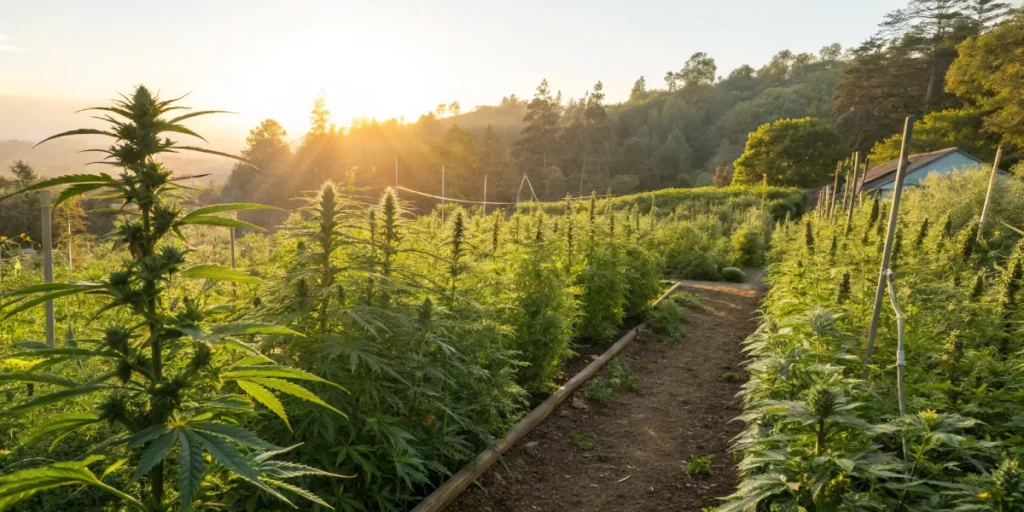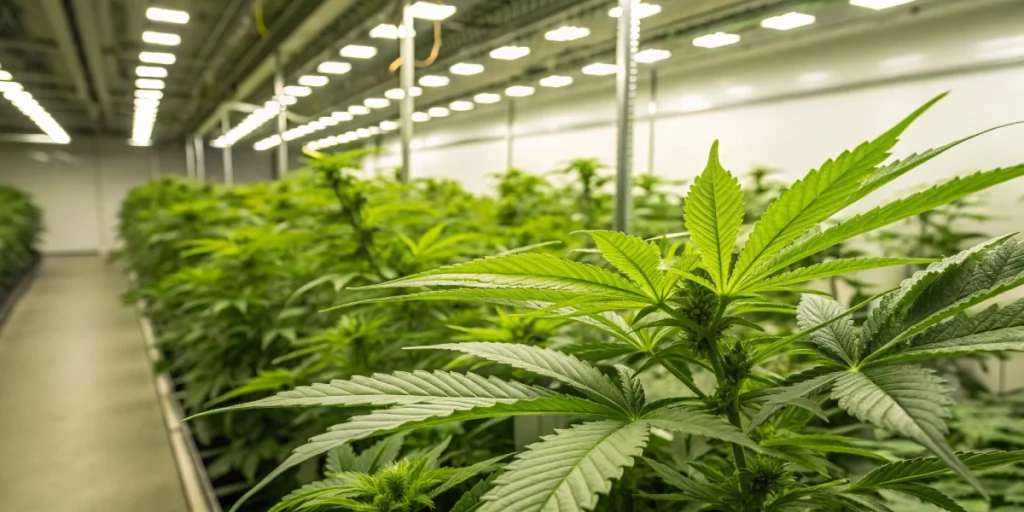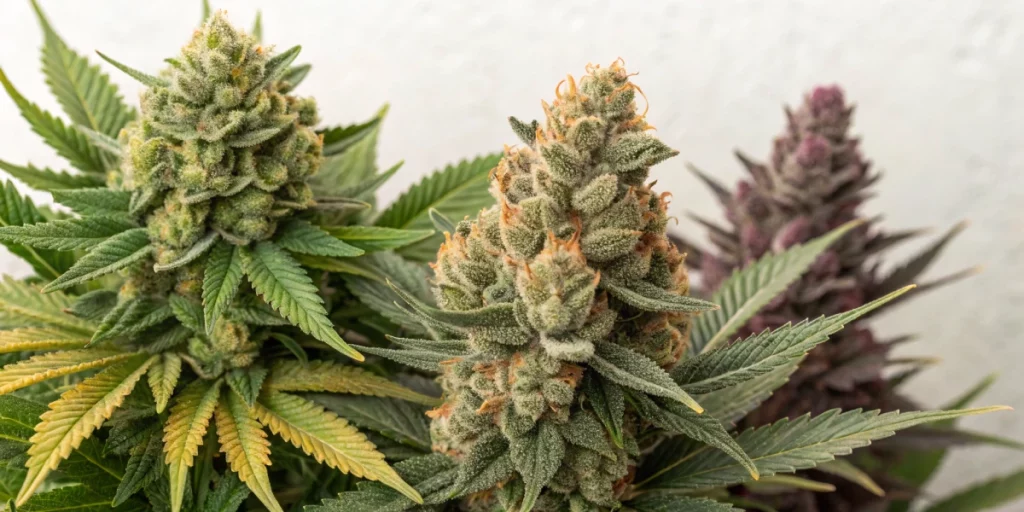Introduction to Pine Terpene
Pine Terpene is a natural compound found in many plants, including pine trees and cannabis. This terpene gives off a fresh, woody scent that many people find pleasing. It occurs in nature and contributes to the distinct aroma of several strains. Its presence is noted in both outdoor and indoor grown plants, making it a popular subject among cultivators who value natural flavors and aromas.
Pine Terpene naturally appears in coniferous trees and certain cannabis strains. Its formation is part of a plant’s normal metabolic process. The compound not only influences the scent but also helps protect the plant from pests. Many growers appreciate this terpene for the way it enriches the overall character of their crop, adding an appealing and familiar fragrance.
Sensory Attributes of Pine Terpene
The aroma of this terpene is fresh and clean, with hints of pine needles and a touch of citrus. This pleasant scent makes it a favorite in aromatherapy and natural product formulations. Its flavor profile is similarly bright, often described as crisp and invigorating. This sensory quality can enhance the taste of cannabis, offering a unique twist to the traditional herbal notes.
When compared with other terpenes, this terpene stands out for its sharp, refreshing fragrance. While some terpenes offer sweet or earthy aromas, Pine Terpene maintains a distinct, invigorating quality. Its clear, natural scent is easy to recognize and remains consistent across different plant species. Such attributes help many cultivators and users appreciate the subtle yet noticeable differences it brings to their products.
Applications and Benefits of Pine Terpene
Pine Terpene plays a significant part in shaping the aroma and flavor of cannabis. It can enhance the natural taste of buds by adding a layer of fresh, pine-like notes. This effect is particularly valued by those who prefer a more vibrant and lively profile in their cannabis. Its inclusion in products is often aimed at achieving a balanced, natural sensory experience that appeals to a wide audience.
Beyond aroma, this terpene finds uses in therapeutic and industrial contexts. Some studies suggest it may help support a relaxed state and promote well-being when inhaled in controlled amounts. It is also used in cleaning products and natural remedies because of its refreshing scent and potential antibacterial properties. These benefits make Pine Terpene a versatile and valued component in various applications.

Cultivation Factors Influencing Pine Terpene
Growing conditions play an important role in the development of this terpene in plants. Factors such as light intensity, temperature, and humidity can affect its production. When conditions are optimal, plants tend to produce higher levels of Pine Terpene, resulting in a more pronounced aroma. Many cultivators adjust their environmental settings to encourage the natural production of this terpene in their crops.
Genetic variability also influences the levels of this terpene found in cannabis. Different strains possess inherent differences in their terpene profiles. Some strains are naturally inclined to produce more Pine Terpene than others. Breeders often select for these traits to enhance the sensory qualities of the final product. This genetic expression variability ensures that each grow can offer a unique profile, tailored to the preferences of users.
Extraction and Preservation of this Terpene
Effective extraction methods help capture this terpene without degrading its natural properties. Techniques such as cold extraction or steam distillation are often used to isolate the terpene while keeping its aroma intact. These methods are designed to be gentle so that the delicate compounds remain potent and true to their natural scent. Proper extraction can yield a high-quality product that reflects the authentic character of Pine Terpene.
In-Depth Analysis of Pine Terpene in Cannabis Cultivation
Pine Terpene holds a special place in cannabis cultivation for its impact on aroma and overall sensory appeal. Many growers notice that even a small concentration of this terpene can transform the profile of a strain. This change adds an element of freshness that distinguishes it from more common earthy scents. The compound also contributes to the complexity of flavor, which can make a crop more marketable and appealing to a broader audience.
Research into Pine Terpene is ongoing, and many cultivation experts are keen to understand its full potential. Detailed studies focus on how different light and nutrient conditions influence its production. These insights help growers optimize their practices to maximize the benefits of this terpene. By monitoring environmental factors closely, cultivators can achieve a balanced terpene profile that enhances both the aroma and perceived quality of their cannabis.
User Tips and Expert Recommendations for Pine Terpene
Many seasoned growers share simple tips that help maximize Pine Terpene production. One recommendation is to maintain a steady light cycle and moderate temperature to support steady terpene synthesis. Small adjustments in water and nutrient delivery can also have a positive effect. Growers find that these practical steps lead to a more consistent aroma, making it easier to achieve a high-quality crop that showcases the natural benefits of Pine Terpene.
Experts also advise that careful monitoring of environmental conditions is key to success. Using digital tools to track temperature and humidity helps growers make timely adjustments. This proactive approach ensures that the conditions remain optimal forthis terpene production. Regular observations and record-keeping can reveal patterns that guide improvements in cultivation techniques, ultimately enhancing the overall sensory appeal of the final product.
Recent Trends and Research on this Terpene
Recent research has shed light on innovative methods to boost Pine Terpene production in cannabis plants. Scientists are experimenting with varying light spectrums and advanced nutrient schedules. These new techniques are designed to encourage the natural synthesis of this terpene without causing stress to the plant. Such advancements are exciting for both researchers and growers who are eager to improve crop quality with a focus on natural compounds like Pine Terpene.
Practical Implications for Growers Using Pine Terpene
For many growers, focusing on this terpene can simplify the cultivation process. Maintaining a balanced environment helps ensure that plants produce a steady level of this terpene. Growers report that when this terpene levels are high, the overall aroma of the crop improves noticeably. This improvement can lead to better marketability and customer satisfaction. By following straightforward cultivation practices, growers can reliably produce cannabis with a pleasing and consistent sensory profile.
Strains Rich in Pine Terpene
Pulp Friction
Pulp Friction is a vibrant strain known for its sweet, fruity flavor paired with a surprising twist of fresh pine aroma from Pine Terpene. This unique combination gives the strain a refreshing character that appeals to those who enjoy both melon and pine scents. Growers appreciate Pulp Friction for its resilient nature and consistent expression of this terpene, which enhances its overall sensory profile and makes it a standout variety in many gardens.
In many cultivation setups, Pulp Friction performs reliably, producing a pleasant blend of flavors that balance sweetness with crisp pine notes. The presence of this terpene adds a natural brightness to the aroma, making it both inviting and distinct. This strain is ideal for growers who want to experiment with flavors while keeping the process straightforward and enjoyable, offering an accessible yet flavorful option.
Cherry Pie
Cherry Pie combines rich, dessert-like cherry flavors with a refreshing pine aroma influenced by Pine Terpene. Its taste is both sweet and savory, creating a layered profile that captivates users from the first inhale. Many growers favor Cherry Pie because the presence of Pine Terpene gives it an extra spark, adding a natural, woodsy quality to its distinctive cherry notes.
The balanced character of Cherry Pie makes it a delight for both recreational users and cultivators. Its reliable performance in various growing conditions means that the natural production of Pine Terpene remains strong, even with minimal care. This consistency in aroma and flavor helps establish Cherry Pie as a dependable strain for those seeking a sophisticated taste with a hint of pine, perfect for an engaging cultivation journey.
Lemon Tree
Lemon Tree is celebrated for its deep, mysterious flavor profile and a subtle yet defining pine note from this terpene. The strain offers an intriguing blend of earthy and herbal tones, complemented by a hint of pine that enhances its overall aroma. Many growers find that the expression of this terpene in Lemon Tree adds complexity, making it a favored choice for those looking to create a unique and aromatic crop.
This strain performs well under various conditions, with its steady growth and strong terpene expression making it a reliable option for beginners and experts alike. The infusion of this terpene provides a fresh counterbalance to its more robust flavors, resulting in a well-rounded sensory experience. Lemon Tree stands out for its ability to combine a classic cannabis profile with a refreshing pine twist, inviting both new and seasoned cultivators to appreciate its distinctive charm.

FAQs about Pine Terpene
What is Pine Terpene and why is it important in cannabis?
Pine Terpene is a natural aromatic compound found in pine trees and certain cannabis strains. It contributes a fresh, woody scent to the plants and enhances their flavor. Many growers seek to maximize this terpene because it improves the overall sensory quality of cannabis. Its presence is often associated with a more vibrant aroma and taste that appeals to users and can indicate a healthy, well-cultivated crop.
How can I increase Pine Terpene levels in my cannabis garden?
To boost Pine Terpene production, adjust environmental factors such as light intensity, temperature, and humidity. Regularly monitor your grow room and ensure stable conditions. Use organic nutrients and maintain proper watering schedules to reduce plant stress. Many cultivators find that small tweaks in their routine lead to a noticeable increase in Pine Terpene. This natural enhancement improves the aroma and overall quality of the harvest, making your crop more appealing to users.
What extraction methods preserve Pine Terpene effectively?
Extraction methods like cold extraction and gentle steam distillation help maintain the integrity of this terpene. These techniques reduce heat and preserve the natural aroma and flavor of the terpene. When applying these methods, ensure that the process is carefully controlled to avoid degradation. Using proper storage techniques, such as airtight containers in cool, dark places, also helps preserve this terpene. Such practices maintain potency and ensure that the final product retains its desirable sensory attributes.





